Fatehpur Sikri (Agra): Uttar Pradesh is in the grip of a deadly heatwave. Mercury is frequently crossing the 45-degree mark. But the killer heat can’t stop 42-year-old Ajay Pratap Singh from navigating through the narrow lanes of the Agra District Court complex, carrying files that can redefine India’s history.
Small Causes Court’s young judge Mrityunjay Srivastava gives Singh 8 July as the date of hearing, asking him to send summons to the other parties. The UP Sunni Central Waqf Board and Sheikh Salim Chisti Dargah Management Committee will be intimated. Singh contests that the Sheikh Salim Chishti Dargah that lies inside the Fatehpur Sikri fort—40 km from Agra—is built on the ruins of the Kamakhya Devi temple mentioned in poems of Vidhyadhar, the poet in the court of Sikri king Raja Dham Dev, long before 1580-81 when the dargah came up. And the town wasn’t settled by Mughal emperor Akbar but by Sikarwar Rajputs, from where it draws its name. Even in Baburnama, Babur’s biography, Sikri is mentioned.
Singh is a man on a mission to dig up history and restore the Hindu pride—one archeological site at a time. A one-man army with historical knowledge and the legal teeth. It’s bringing his claims serious recognition and him a little fame and respect before his family members. Unlike similar cases spread across India’s courts that are backed by agitation coloured in religious flavour and campaigning, Singh restricts his claims to archeological and historical rationale. In the last one year, he has filed five cases and all of them have one objective. Of taking back the Hindu places allegedly occupied by Muslims in the past. He claims Taj Mahal is Tejo Mahal, Sheikh Salim Chisti Dargah is Kamakhya Devi Temple, Shahi Idgah is built on Sri Krishna Janmsthan, Atala Mosque in Jaunpur is Atala Devi Temple and Sri Krishna Vigraha idols lie under Agra’s Jama Masjid. All ASI protected sites.
“We should be proud of our history. Attempts were made to destroy our identity by hiding the real history. If there is no identity, will a person be able to live with self-respect? This is not a matter of Hindu-Muslim but a matter of truth and the people of India have the right to know the truth,” says Singh, wearing a red kalawa (thread) and a brass bracelet in his hand sitting at his Agra home, 25 km from Sikri.
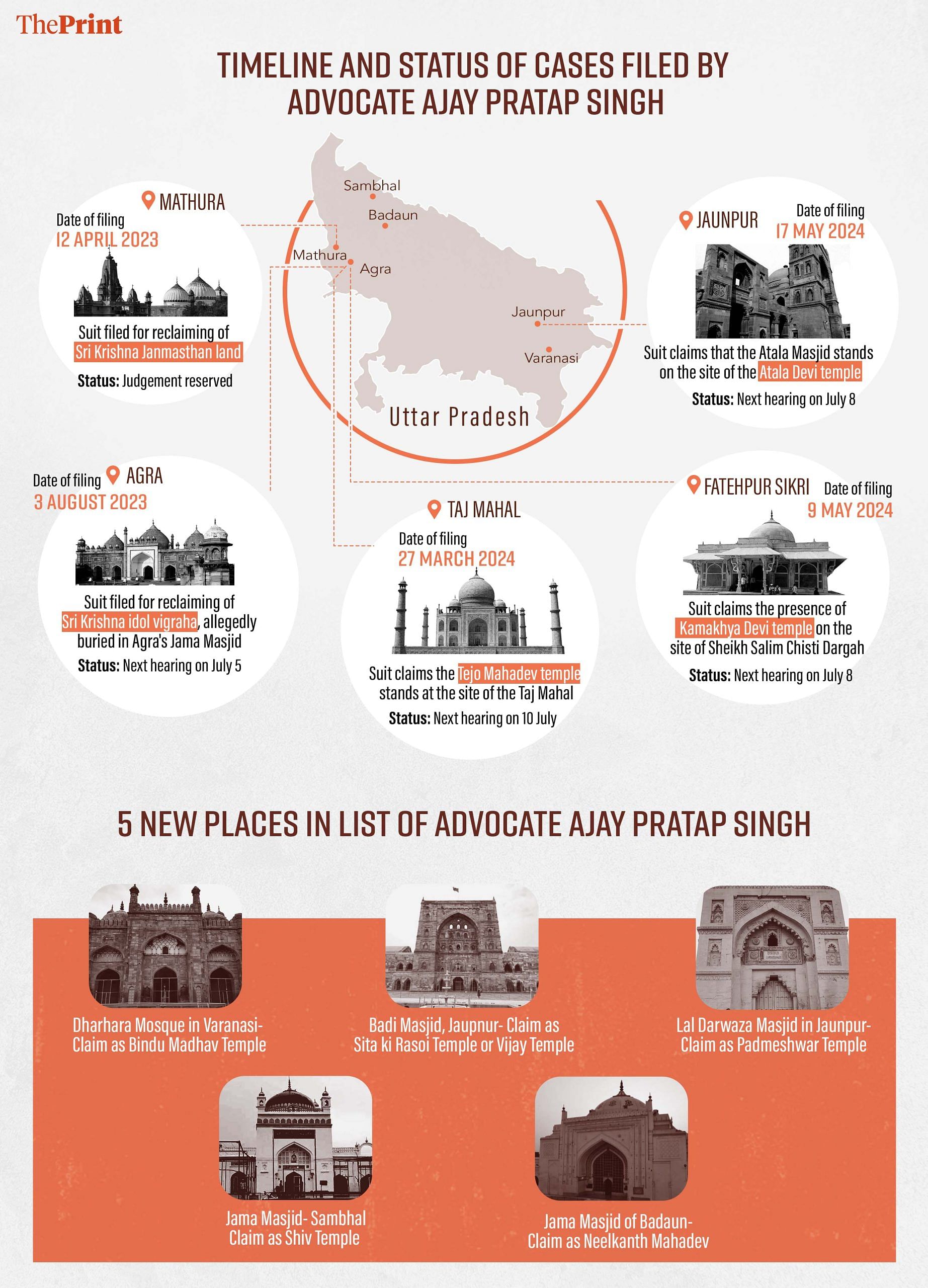
And Singh has picked his spots carefully — ones that don’t have the shield of the Places of Worship Act, 1991.
“ASI protected monuments are not covered under the Act. It does not apply to any place of worship referred to in the says sub-sections which is an ancient and historical monument or an archaeological site or remains covered by the Ancient Monuments and Archaeological Sites and Remains Act, 1958 (24 of 1958.) or any other law for the time being in force,” says Singh, reading the clause of Places of Worship Act.
Also read: Amritsar man killed in Ukraine war only got 2-week training. Wife now begs for his remains
Archaeology, Baburnama, RTIs and more
His earphones hang from his neck and his phone keeps ringing as Singh juggles between the work pertaining to the five cases. He is asking fellow lawyers about the status of case files, calling them in Agra court and reminding him of the hearing of the Sikri case that is scheduled the next day. He tells his friend (fellow lawyer) over the phone to spread the word – in case more lawyers want to join in.
Saving Hindu pride is a recent cause the lawyer has picked after having spent nearly a decade in the legal profession. He reads ancient texts, books by archaeologists, Baburnama etc to corroborate his facts. And of course, RTI is his modern weapon.
There are five more places in his list on which he is going to make the Hindu claim in the next couple of months. Dharhara Mosque in Varanasi, Badi Masjid in Jaunpur, Lal Darwaza Masjid in Jaunpur, Jama Masjid in Sambhal, Jama Masjid in Badaun.
Singh relies on evidence related to the Archaeological Survey of India in his petitions.
“There is a difference between our academic history and the history of ASI. Academic history is distorted history. ASI is a scientific body of the government, which excavated (between 1999-2000 by archaeologist DV Sharma) Sikri to find out its history. This revealed that the basic architecture of Sikri is not Islamic and new constructions have been made on it using the remains of Hindu structure that go against the basic nature of the building,” he says, sitting at his home in the Bichpuri area of Agra.
This is the first time such a claim has been made about Sikri. When DV Sharma excavated Sikri over two decades ago, he found some broken Jain statues and statues of Saraswati. He mentions these findings in the book Archaeology of Fatehpur Sikri. It is this work that has become the basis of Singh’s petition.
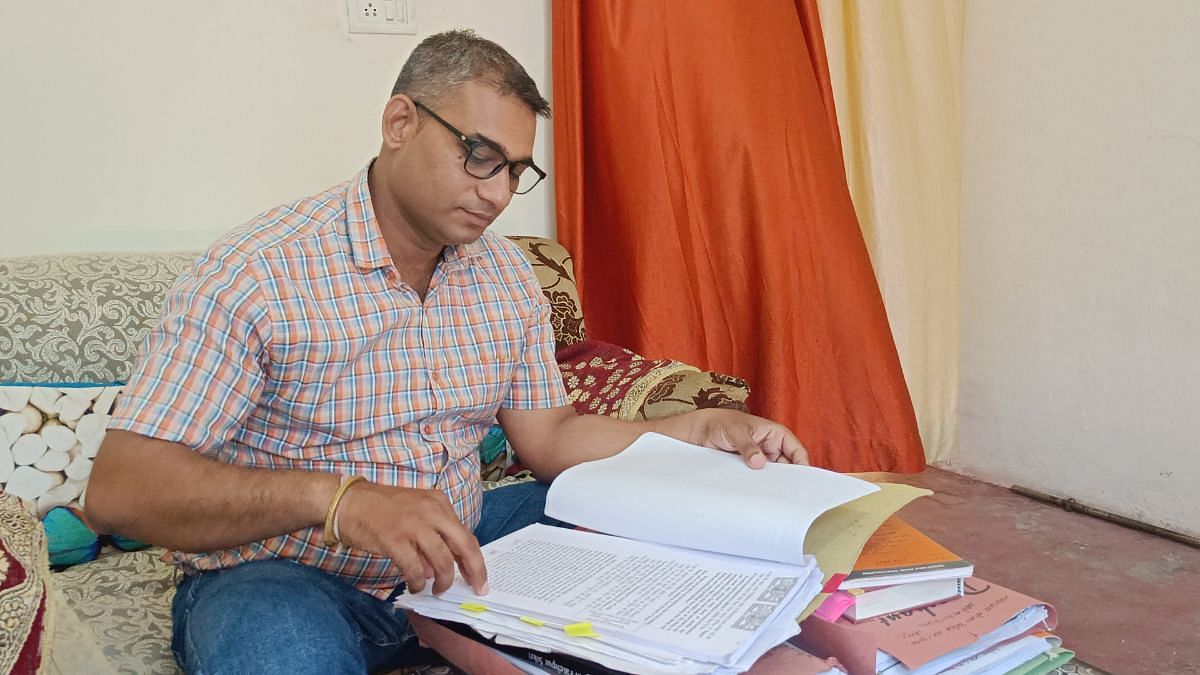
“I did not work from any preconceived notion but when I excavated, it completely changed the character of Sikri. Broken statues were found belonging to 1010 AD i.e. 500 years before Akbar, proving the place was not founded by the Mughal emperor,” Sahrma told ThePrint. The ASI website says Sikri was built by Akbar and the public perception is no different. Akbar’s biographer Abu Fazl also mentioned in Akbarnama that the city was built by Akbar.
These days, discussions have intensified among the people in Fatehpur Sikri about Singh’s petition. They say an attempt is being made to create controversy.
Also read: Bahraich to Buckingham Palace—Arti’s bumpy e-rickshaw journey that men tried to stop
The accidental lawyer
Singh, who hails from Etah, 80 km from Agra, calls himself an accidental lawyer. He studied law from Bareilly Law College in 2014 and started practicing in 2015. But that wasn’t his first choice or he had any interest in law. Before law, he had exhausted all his UPSC attempts. Then, for many years, he fought criminal cases in Mainpuri district court, but that didn’t give him the kick.
“Something was missing,” he says.
When Singh is not fighting for history, he is hitting the gym. Though he was practicing law, recognition eluded him and even family members taunted him for not having achieved anything substantial. But when his name started appearing in newspapers due to these court matters, things changed for the better.
“Now the family taunts me less,” he says with a smile.
Singh has an MSc in Organic Chemistry from Agra’s St. John’s College. But he became the history buff during his UPSC preparations in 2008.
“I have always had an analytical approach. When I studied history, many contradictory facts came to light, which aroused my interest in the subject. After that I read many history books,” he says.
The lawyer devotes long hours to history and archaeology books to strengthen his cases—from Baburnama to Cunnigham’s writings and old annual reports of ASI that help him understand the basic nature of the old structures.
“My fight is against the way Hindu history has been erased from the books. Historians wrote about Mughal kings but the Hindu kings who showed their bravery during the Mughal rule have not been mentioned. And I am doing this without making provoking statements,” says Singh.
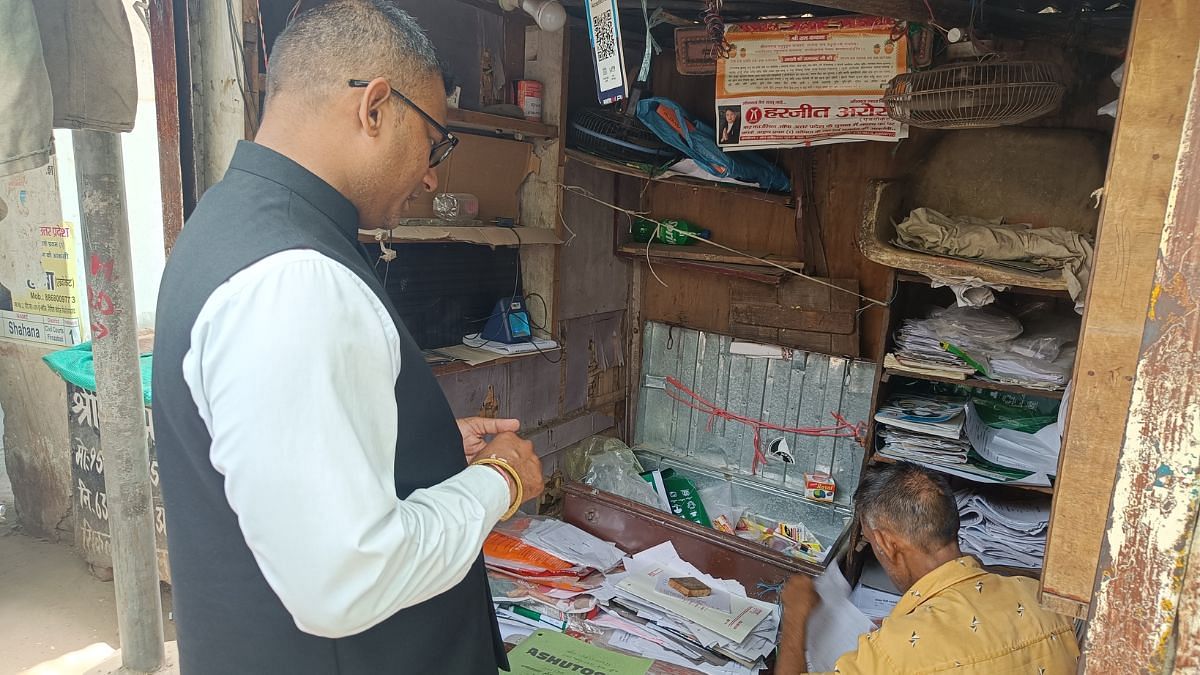
A devotee of Krishna, Singh’s team has 4-5 people—all lawyers and history buffs in their 40s. Their job is to identify Hindu sites occupied by Muslims rulers in the past. Like Singh, they too study ASI documents and historians’ work to understand who wrote what about these structures.
Every day, Singh puts a WhatsApp status citing Bhagavad Gita. One of his recent statuses read: Om Krishnaya Vasudevaya Haraye Parmatmane || Pranatha Kaleshnashaya Govindaya namo namah. The mantra recognises Krishna as the remover of sufferings.
And his Facebook bio reads, “Victory and death in battle has always been the religion of the Rajputs, from time immemorial, it is his character that he knows no fear.”
“We have enough evidence (in Sikri case) which will confirm our claims in the court. I am supporting him (Singh) because he has taken up a noble cause,” says Naresh Sikarwar, senior advocate.
Singh claims he is a non-political person and till now he has not received any support from the government or Hindu groups. However, his social media posts tell otherwise.
“Modi ji is becoming PM for the third time. Tendulkar also used to get out at 90 sometimes, if not this time, then next time he will cross 400,” read one of his posts on social media.
However, he says that he could have filed such a petition only during the BJP government.
“There is no pressure on me right now and neither have I received any kind of threat. If the government was of a different ideology, there would have been pressure.”
He considers himself a proud Rajput. In March this year, he filed an RTI seeking ASI’s response on whether it had any documents proving that Maharaja Jaichand had invited Gauri against Prithviraj Chauhan and that Jaichand was a traitor. Four months after it was filed, the RTI is travelling—from NCERT, History Division, to National Archives of India.
As per most historical accounts, Jaichand assisted Ghori against Prithviraj Chauhan in the Second Battle of Tarain in 1192 AD. He supported Muhammad Ghori because of his rivalry with Prithviraj Chauhan III.
“If the papers are not found, then the Government of India will have to answer in court that Maharaja Jaichand is not a traitor and on what basis the entire Kshatriya community is insulted,” he says.
Also read: ‘Indians willing to bargain lives for cheap treks’—trekking companies have no govt oversight
The five cases
The biggest and probably the most controversial of the five claims Singh is making includes one of the seven wonders of the world — it’s the Taj Mahal. The lawyer claims the 17th century masterpiece is built on a temple of Lord Shiva called Tejo Ling Mahadev.
An RTI query that Singh filed with the ASI in March this year sought to know the history of the Taj Mahal building. The ASI simply told him to read the monument’s website.
Not satisfied by the ASI’s bureaucratic and direct of response, Singh started his own research to find the “truth”, immersing himself and his team of researchers in documents such as Baburnama, Humayunnama, Bulletin of Royal Asiatic Society of Bengal, ASI’s Epigraphic Indica, Vishwakarma Prakash-an old Hindu text, among others.
“Tejo is one of the many names of Shiva. This place is also associated with Hindus, which the ASI should find out,” he says.
Singh claims in his petition that it is tough to establish the original architect who designed the Taj Mahal. It has been mentioned as a controversial issue in the records of ASI and the Royal Asiatic Society Bengal before Independence. As part of the RTI response, ASI informed Singh that no excavation has been done at Taj Mahal till date. He has cited Agra Gazette, ASI old records and Royal Society records in this case.
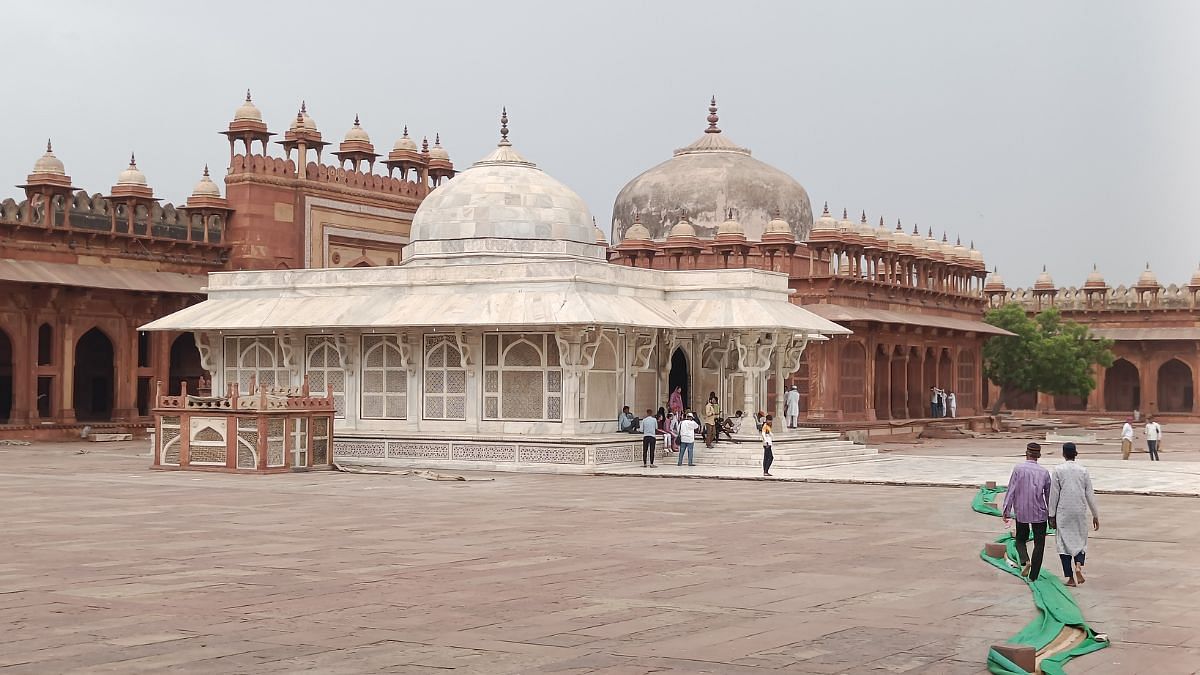
Not just Shiva, Singh’s legal knowledge is also dedicated to Krishna. Of the 15 cases pertaining to the Sri Krishna Janmabhoomi before the Allahabad High Court, one has been filed by Singh.
The lawyer, who plans to publish a book on Krishna Janmbhoomi, claims that his case is based on the evidence of ASI whereas the other cases do not have that much strength.
“During cross-examinations, petitioners in other cases do not have much to say. But we have a lot of material to present before the court,” says Singh.
Sometime last year, a conversation with a local journalist left Singh in tears. The journalist told Singh that the centuries-old idol of Lord Krishna was lying under the stairs of Jama Masjid in Agra. It was Aurangzeb’s job.
On 3 August last year, Singh filed a case in Agra district court about the vigraha idols of Katra Keshav Dev temple. He claims the idols lie beneath Agra’s Jama Masjid.
Singh cites from Cunningham’s Report of a Tour in Eastern Rajputana in 1882-83, where the author has presented the account of French traveller Jean Baptiste Tavernier who wrote of having seen ‘idols large and small alike, all adorned with costly jewels carried away from the heathen shrines and taken to Agra, where they were buried under the steps of Nawab Kudisa Begam’s Mosque, so that people might trample upon them forever.
Singh demands a GPR – Ground Penetrating Radar – survey of the Jama Masjid in the court, the hearing of which is on 5 July.
Historians also find truth in these claims. “Aurangzeb demolished the temple and buried its remains in the Jama Masjid. No one can deny this. But it is not right to dig up this matter again and spoil the atmosphere of the country on this basis,” says Rajkishore Sharma Raje, a historian who wrote extensively on Agra’s history.
According to Raje, many mosques were built on the remains of Hindu temples during the Muslim period. They did not have enough time to build new buildings, so they built structures on old sites. The historian also agrees the knowledge about the Hindu connection of these monuments and sites is missing from most textbooks.
“This has happened not only around Agra but also in other parts of the country. During the reconstruction, a lot of evidence was left behind. On that basis, the Hindu side is claiming today. Some claims will prove to be hollow and some claims really have some substance,” says Raje.
Citing the example of Sikri, Raje says that the construction and architecture confirms that this is not a Muslim building. “The kind of architecture that has been made in many places like Birbal’s palace or the kind of figures that have been made in Panchmahal, such cannot be found in any Muslim building. Which proves that construction was done in Sikri before Akbar,” he says.
Archaeologist D.V. Sharma also says that the architecture of Sikri shows that Akbar used the old structures here by making additions to them. “There are many phases in Sikri. The coming generation has to decide whether they want to correct history or not,” he says.
Sharma, however, doubts the claims of the Chishti Dargah being the Kamakhya temple. “It will be difficult to say that the site of the dargah was the temple itself because there have been major alterations to the structures,” he says, adding that Akbar had only built the Chishti Dargah and the Buland Darwaza, the rest was built by the Sikarwar Rajputs.
On 17 May, Singh filed a case in the Jaunpur district court claiming 14th century Atala Masjid as Atala Mata Temple, in which the UP Sunni Central Waqf Board has been made a party.
“Its architecture is completely Hindustani. At some point in time, it was converted into a mosque. I am fighting a battle to decide the real character of this place through law,” says Singh.
However, according to UP Sunni Central Waqf Board officials, such cases have been frequent in the last few years. “Such cases are filed to spread animosity in the society. The more history is dug up, the more controversies will arise in the present. Why create tension now over something that happened centuries ago. But some people have made this their mission,” says an official of the Waqf Board on condition of anonymity.
As for Singh, he considers raising these matters a responsibility towards the next generation.
“I want to give such a legacy so that the next generation is proud of their ancestors. Giving something back to society is a great thing. Indian culture has survived many invasions because the basic nature of Hindus is tolerant,” he says.
He insists that truth must always be protected and someone has to work for it.
“I have taken up this task. People may have problems with my methods. If the truth seems bitter or hurts the ears, I cannot give it up.”
(Edited by Anurag Chaubey)



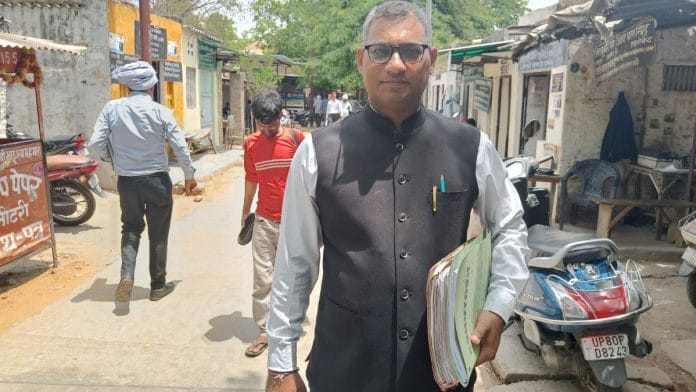



He is an idiot .
I was brought up and lived in Agra.
Studied in St. Peters college.
Tomorrow he idiocity will carry to an extent that St. Peter cathedral was a temple site or that matter his Alma atta college St. John’s colleges he will put on the list.
Agraties fight against this kind of fundamentalist we have seen enough.
Why can’t he spend his energy justice to the poorest.
He is nothing but an idiot, he has no brains, instead of using his education properly he is creating divisions among people.
Good luck to him. Was proving ” Babur demolished a Hindu temple to build Babri mosque” not in his agenda? Even ASI failed to convince Supreme court on this. It is known that Muslim rules demolished many Hindu temples & Hindus demolished many Buddhist temples before Islam came.